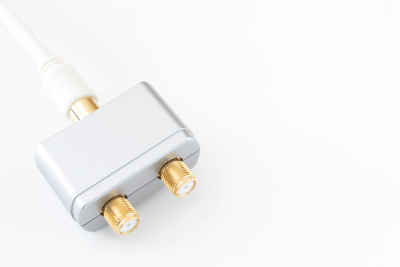What Is a Diplexer?

A diplexer, also called a demodulator or duplexer, is a device used in telecommunications equipment. It can mix two signals into one or separate one signal into two. There is no clear difference between a duplexer and a diplexer, but they are generally called a duplexer when used for FDD communications and a diplexer in other cases. Duplexers are capable of mixing and separating signals that are far apart in frequency, and can handle a relatively wide bandwidth of frequencies.
Uses of Diplexers
Diplexers are used in telecommunications equipment to mix and separate signals. An example is a TV antenna. When signals for terrestrial TV and signals for BS are sent through the same antenna, they are mixed into one using diplexers. Diplexers are also used to separate the signals sent as one when they are received by a cable and satellite television signal. Diplexers are also used in numerous other communications devices such as cellular phones and radios.
Principle Features of Diplexers
Diplexers are one of the devices used in a wide variety of telecommunications equipment. Here we introduce its principle and features.
Diplexers are made of low-pass filters, high-pass filters, and band-pass filters. By creating multiples of these filters using coils and capacitors, it is possible to mix or separate signals according to frequency. In particular, they are widely used in communication devices such as cellular phones, which have different frequencies for transmission and reception.
A phase shifter is also sometimes used so that the impedance of the element part is much larger than the impedance of the part through which the signal passes. By creating a large difference in impedance, they do not interfere with each other, and the structure can be designed to have little effect.
In recent years, surface acoustic wave (SAW) diplexers using SAW filters have become widespread. This is becoming increasingly popular because they are more compact than other diplexers.